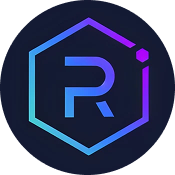In the rapidly expanding universe of decentralized finance, two platforms stand out for their innovative approaches to optimizing yield and maintaining stability: Yearn Finance and MakerDAO. While both aim to empower users with decentralized tools, their core functionalities, governance models, and target audiences differ significantly. This comparison delves into the technical architectures, strategic features, and ecosystem roles of each platform, providing clarity for investors and enthusiasts looking to navigate the complex DeFi landscape with confidence.
Short on time? Jump to Yearn Finance vs Maker Comparison
Understanding Yearn Finance and Maker ?
Yearn.Finance, launched in early 2020 by Andre Cronje, is a decentralized platform on Ethereum that automates yield farming by aggregating various DeFi protocols like Aave, Curve, and Compound. Its core function is to optimize user returns through strategies called vaults, which automatically shift funds to the most profitable opportunities. MakerDAO, on the other hand, is a pioneer in decentralized stablecoins, managing the Dai system on Ethereum. It allows users to generate Dai by locking collateral in smart contracts called Vaults, maintaining stability through decentralized governance. Both platforms leverage Ethereum's smart contract capabilities but serve distinct purposes within the DeFi ecosystem.
Yearn's primary focus is on yield maximization via automated strategies, making it a favorite among investors seeking high returns with minimal manual oversight. MakerDAO's emphasis is on maintaining a stable, decentralized currency—Dai—that functions as a reliable medium of exchange and store of value. While Yearn offers flexible, strategy-driven asset management, Maker provides a decentralized, collateral-backed stablecoin system that aims for stability amid market volatility. Understanding these foundational differences helps users align their goals with the appropriate platform.
Both protocols have evolved significantly since inception. Yearn's development emphasizes modular architecture and multi-chain strategies, while MakerDAO continues to refine its stability mechanisms and expand collateral types. Their respective communities actively participate in governance, shaping future updates and security enhancements. Recognizing their unique strengths and limitations is essential for anyone looking to leverage DeFi's potential effectively.
This comparison aims to clarify how Yearn and Maker serve the DeFi community, highlighting their technical architectures, key features, and ideal use cases. Whether you are an investor seeking high-yield opportunities or a user needing a stable digital dollar, understanding these platforms' core principles will help you make informed decisions in this dynamic space.
Key Differences Between Yearn Finance and Maker
Primary Function
- Yearn Finance: Yearn Finance functions as an automated yield aggregator, continuously optimizing users' funds across various DeFi protocols to maximize returns. Its vaults employ strategies that adapt to market conditions, seeking the highest yields with minimal user intervention. This focus on yield maximization makes Yearn a dynamic tool for investors aiming for high-performance assets within the DeFi ecosystem.
- Maker: MakerDAO operates as a decentralized autonomous organization that manages the Dai stablecoin. Its primary purpose is to maintain Dai's peg to the US dollar through collateralized debt positions and governance mechanisms. Maker's system ensures stability and security, providing a decentralized alternative to fiat currencies and enabling users to generate Dai against diverse collateral assets.
Governance Model
- Yearn Finance: Yearn utilizes the YFI token for governance, allowing holders to propose and vote on platform upgrades, strategy changes, and security measures. The governance process involves staking tokens during voting periods, fostering community involvement and decentralization. Recent updates like YearnV3 aim to further decentralize strategy whitelisting and automate governance functions, emphasizing community-led development.
- Maker: MakerDAO’s governance revolves around MKR token holders who vote on risk parameters, collateral types, and system upgrades. MKR token holders participate in a decentralized decision-making process, reflecting collective risk appetite and strategic priorities. This model ensures that the stability of Dai is maintained through community consensus, but it also introduces complexities and slower decision cycles.
Underlying Asset and Tokenomics
- Yearn Finance: Yearn's native token, YFI, is a governance token distributed initially to liquidity providers and users, with a capped supply of 30,000 tokens. YFI holders influence platform development and participate in governance proposals. The platform's revenue is generated through performance fees and yield farming strategies.
- Maker: MKR is the governance token of MakerDAO, used for voting on protocol parameters and risk management. MKR tokens are also burned or minted based on system needs, balancing the stability fee and collateral backing. Unlike YFI, MKR acts as a stake in the system’s health, with value tied to the platform's stability and governance participation.
Security and Risk Management
- Yearn Finance: Yearn has faced security challenges, including a notable exploit in February 2021 that resulted in significant financial loss. Its modular architecture and strategy diversification aim to mitigate risks, but ongoing security audits and upgrades are critical to safeguard assets.
- Maker: MakerDAO employs over-collateralization and liquidation mechanisms to manage risk. Its decentralized governance continuously adjusts risk parameters and collateral types to adapt to market conditions. Recent updates have focused on integrating real-world assets and improving system resilience, though the complexity of collateral management remains a challenge.
Ecosystem and Use Cases
- Yearn Finance: Yearn serves investors and yield farmers seeking automated, high-yield strategies. Its vaults and strategies are used across various DeFi platforms for lending, liquidity provision, and asset management, making it a versatile tool for maximizing returns.
- Maker: MakerDAO’s primary use case is as a decentralized stablecoin system, enabling users to generate Dai against collateral. Dai is used for trading, lending, payments, and as a stable store of value within DeFi, supporting a broad ecosystem of decentralized applications.
Yearn Finance vs Maker Comparison
| Feature | ✅ Yearn Finance | ✅ Maker |
|---|---|---|
| Primary Function | Yield optimization via automated vault strategies | Collateral-backed stablecoin issuance and stability |
| Governance Token | YFI token, community-driven proposals | MKR token, voting on risk and system parameters |
| Main Asset | Various DeFi tokens, yield strategies | Dai stablecoin backed by diverse collateral |
| Security Approach | Algorithmic strategies, security audits, and upgrades | Over-collateralization, liquidation, community governance |
| Ideal For | Investors seeking high yields with automation | Users needing a decentralized, stable digital dollar |
| Recent Development Focus | Modular vault architecture, multi-chain strategies | Collateral diversity, governance enhancements |
Ideal For
Choose Yearn Finance: Yearn Finance is ideal for investors and yield farmers looking for automated strategies and high returns across DeFi protocols.
Choose Maker: MakerDAO is best suited for users seeking a decentralized stablecoin solution and those interested in governance-driven stability management.
Conclusion: Yearn Finance vs Maker
Yearn Finance and MakerDAO exemplify the diverse applications within DeFi, with Yearn focused on maximizing yields through automation and Maker dedicated to maintaining a stable, decentralized currency. Their architectures reflect different philosophies—one emphasizing profit optimization, the other prioritizing stability and governance transparency.
Choosing between the two depends on your investment goals and risk appetite. Yearn offers dynamic strategies for yield seekers, while Maker provides a resilient, community-governed stablecoin that can serve as a foundation for broader DeFi activities. Understanding their core differences enables smarter participation in this rapidly evolving ecosystem.






